‘Pustokaloy’: Where books breathe and memories speak
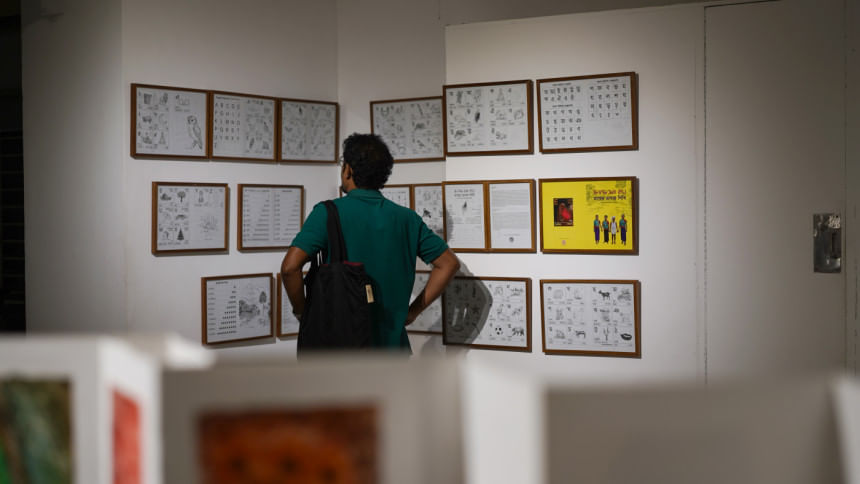
'Pustokaloy', or 'House of Books', was born from a simple but powerful question: in our fast-moving digital age, what value does a physical book still hold? The creators believed that a book is far more than just words on a page—it is a container for memory. It can hold our sense of loss alongside our strength, quiet thoughts alongside our loud protests, and layers of history that shape our present.
This idea sparked the project back in 2022 with a hands-on workshop at Britto Arts Trust in the Green Road area of the capital. The goal was not to create precious objects to be kept behind glass but to rediscover the book as a living, breathing form of art. Artists were encouraged to play with the very essence of a book—to fold, stitch, and draw directly onto its pages, transforming it into a personal and powerful medium for storytelling.
Over time, these initial creations grew and travelled, gathering stories from different places. They have now returned to Dhaka for this exhibition as an act of homecoming. The show demonstrates how an artist's book can challenge the way we usually share stories, making narrative art more personal and accessible, and ensuring that important, often overlooked, voices are heard.
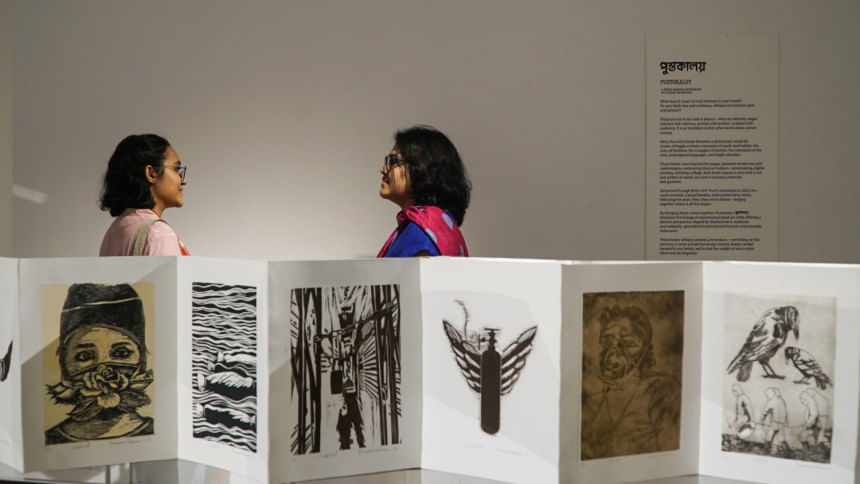
The artists used a fascinating mix of old and new techniques. They practised skilled printmaking methods from the past, combined with collage, sewing, and even sculpture. Some used unusual materials like silk or metal leaf to give their books a delicate, tactile quality. Others employed digital printing to make their art accessible to more people. The result is a collection of artworks that communicate not through words alone, but through their physical presence—the texture of the paper, the choice of materials, and the careful construction all become part of the story.
The themes explored are deeply personal yet universally relevant. Many artists used the book to revisit memories of childhood, identity, and the meaning of home. Others tackled larger historical events, such as the Partition, using the book to process collective trauma and resilience. Some focus on social issues like women's rights or the struggle to preserve endangered languages. In every case, the book itself becomes a safe space, a vessel to carry fragile histories and a testament to the strength found in remembering.
Curator and artist Mokadesur Rahman reflected on the exhibition's motivation, noting, "This workshop and exhibition were born from a conscious response to our modern drift away from books as tangible objects." This agenda to reengage with the physical book is realised powerfully across the 23 artists' works. Rahman's own piece engages with Sufism, portraying a vision of peace and coexistence. He explained that the exhibition was founded on the principle of the book as an artistic medium. For an artist, the paintbrush and the pen are the primary tools of expression.
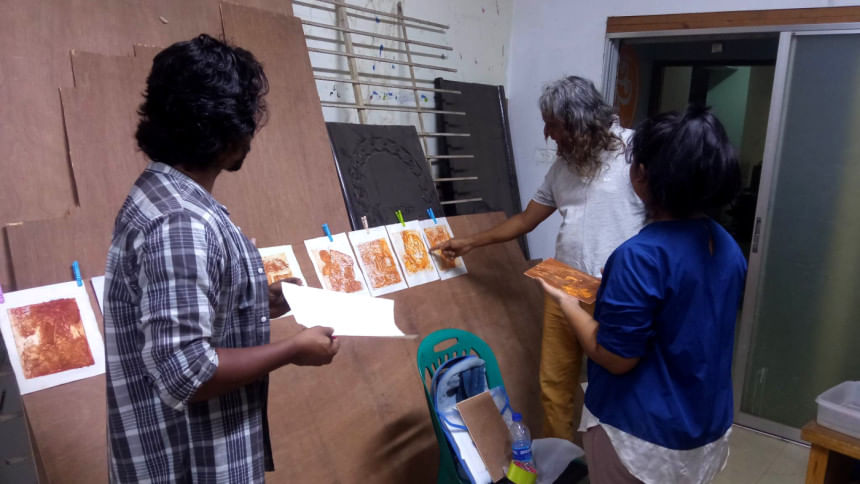
Notable works include Jinnatun Jannat's "Canvas 1947: DADA", a mixed-media compilation that traces her family's displacement during Partition through digitally printed photographs, watercolours, and ink drawings. Mahbubur Rahman's "Drops of Tears" uses thread woven into paper and woodcut techniques to create a breathtaking portrayal of the suffragette movement. In a powerful act of preservation, Sharad Das's "Mayer Bhashay Shikhi" invents an alphabet for the ethnic Mru language, which previously existed only in oral form.
In an art world often preoccupied with spectacle, these modest books demand slower attention, intimate touch, and collective empathy. 'Pustokaloy' demonstrates the extraordinary breadth of the artist's book: some whisper, others confront; some preserve, others protest. This exhibition masterfully positions the book as more than a container of words—it is a protest, a memorial, a gesture of care. Each work asks us not only to look but to listen, to carry memory forward in our own hands, and to feel the weight of what might otherwise be forgotten.
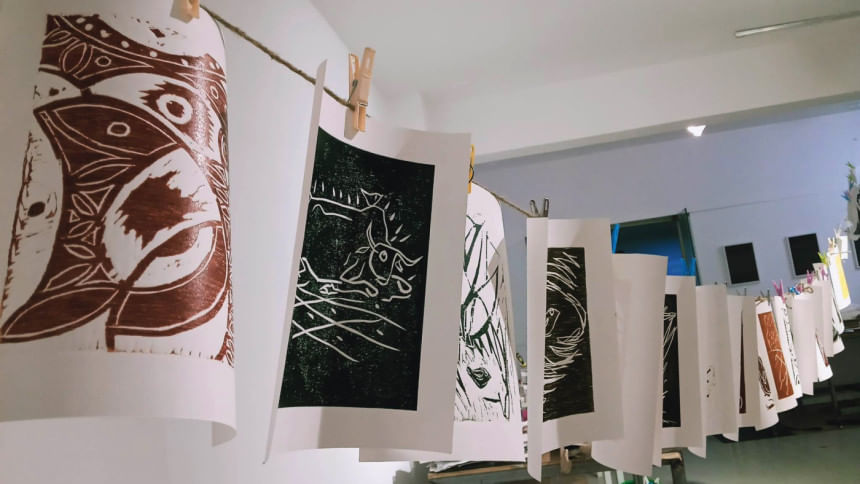
The exhibition brings together the works of Akhinoor Binte Ali, Al-Akhir Sarker, Aminul Islam Ashik, Anisuzzaman Sohel, Farah Naz Moon, Farhana Ferdausi, Farzana Haque, Jewel A. Rob, Jinnatun Jannat, Mahbubur Rahman, Mehedi Hasan, Mahmuda Siddika, Mohosin Kabir, Mokadesur Rahman, Rumana Rahman, Sarah Jabin, Sharad Das, Shimul Datta, Shimul Saha, Suborna Morsheada, Tayeba Begum Lipi, and Yasmin Jahan Nupur, each contributing a distinct voice and vision to this collective exploration of the book as art.
The exhibition is a remarkable convergence of art, memory, and storytelling, currently unfolding at Britto Arts Trust in Dhaka, running from September 27 to October 18, 2025, from 3 to 8 PM.
Nazmun Afrad Sheetol is an IR graduate and a Substack writer. She can be reached at [email protected].

 For all latest news, follow The Daily Star's Google News channel.
For all latest news, follow The Daily Star's Google News channel. 


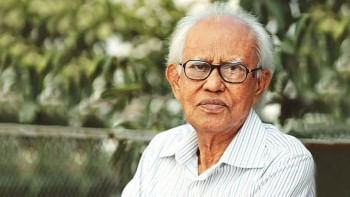
Comments